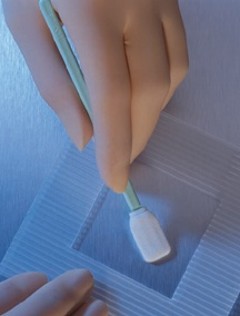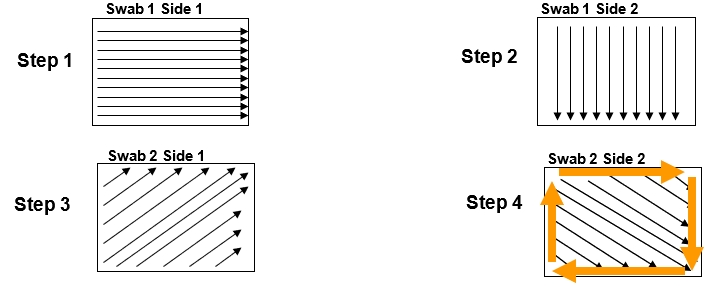- 2025
- 2024
- 2023
- 2020
- 2018
How to Perform TOC Swab Sampling for Cleaning Validation
How to Perform TOC Swab Sampling for Cleaning Validation
Total Organic Carbon (TOC) analysis plays a key role in cleaning validation. The technique below outlines a validated method for TOC surface sampling using low-background swabs and standardized collection practices.
What Makes a Good TOC Swab?
Not all swabs are suitable for TOC analysis. An effective swab for cleaning validation should have:
• Low TOC background to minimize baseline interference
• High recovery efficiency for reliable detection of residual contaminants
• Low particle shedding to maintain cleanroom integrity
• A notched handle for clean, hands-free swab head removal

Required Materials:
Before starting, assemble your TOC sampling kit. While specific configurations may vary, a typical kit includes:
• Sterile swabs (low TOC background, double-packed)
• Sample vials with chemically inert septa
• Diluent (e.g., LO TOC water) for wetting swabs
• Labels for sample tracking
• Sampling template (optional but recommended for consistency)
Step 1: Prepare for Sampling:
1. Define your sampling area using a template (e.g., 10x10 cm).
2. Label vials in advance to ensure traceability.
3. Add a measured amount of low TOC water to the first vial for swab wetting.
Step 2: Sampling Technique (Swab #1)
1. Dampen the first swab using the prepared water; remove excess liquid.
2. Swab the surface using horizontal, unidirectional, overlapping strokes.
3. Flip the swab and repeat the motion in a perpendicular direction.
4. Keep the entire swab head flat against the surface throughout.
Step 3: Transfer and Repeat:
1. Insert the used swab head into a labeled sample vial by snapping it off at the handle notch.
2. Cap the vial securely.
3. Repeat the process with a second swab:
• Dampen and remove excess liquid
• Swab the same area again using angled or diagonal strokes
• Flip and swab in the perpendicular direction
• Finally, use the tip of the swab to trace the perimeter of the sampling area
• Snap the head off and place it in the same vial
• Cap and label
Sample Vial Design Notes
• Vials typically use a Teflon-lined septum backed with silicone to ensure inertness.
• A protective overcap should be removed only just before analysis to prevent contamination.
Best Practices:
• Use two swabs per sample to increase recovery accuracy.
• Always handle swabs above the notch to avoid contaminating the sampling end.
• Ensure all surfaces and tools are cleanroom compliant prior to use.
• Avoid cross-contamination between sampling locations.
Additional Resources
Click here to see our full training video on TOC swab sampling techniques. If you’re looking for validated TOC swabs, sampling kits, or educational materials, click here to contact your closest sales rep.

